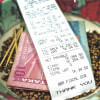Budgetary allocation for energy is not enough

By Bangladesh standards, we have been given an enormous budget. Five years back such a large budget would have been unthinkable, but it is a reality. This certainly displays growth and robust performance of the economy. The power and energy sectors have received the second highest allocation at Tk 21,000 crore. The power sector has received more than Tk 18,000 crore while the energy sector has been allocated only approximately Tk 2,500 crore. Our prime minister wants electricity to reach 100 percent of the households by 2021, hence the large allocation targeting that goal.
The three principal challenges for the government with respect to the power and energy sector are to: (i) supply uninterrupted and quality electricity to all customers, especially to industrial customers; (ii) keep prices of electricity and gas at levels that will allow Bangladeshi industries to remain globally competitive; and (iii) make a smooth transition from natural gas to alternative fuels for urban household cooking.
Has the finance minister addressed these issues and is this budget adequate to meet the challenges stated above? An equally important issue is this: do the responsible agencies have the capacity and capability of implementing such a large budget?
The present government in the last eight years has done a great job of increasing electricity supply, and peak generation has gone from 4200MW in 2009 to 9400MW in 2017. In effect it has been able to build more capacity in the last eight years than any other time in the history of Bangladesh. But has this growth been sustainable? Of the 5200MW of additional peak generation, the lion's share comes from independent power producers (IPPs) and rental oil-fired generation. Can these oil-fired generators be called power plants? Some of these units are 20MW in size. Many of these power plants have used secondhand equipment because these were supposed to be operated for three to five years.
Peak generation has more than doubled in the last eight years, which undoubtedly is a great achievement, but the supply still remains unreliable. Most rural industries complain about several hours of load-shedding per day, low voltage, frequency and voltage fluctuations, and therefore, cannot rely on the grid. Those who do not have captive power still have to invest in diesel-fired standby generators to maintain smooth operation. Thus we may see generation doubling from the present 13,000MW to 24,000MW in 2021 but with the same unreliability lingering on.
What does it take to provide quality power? To begin with, it requires huge investments in transmission and distribution. The investment for this must come almost entirely from budgetary allocation. Whereas it is very easy to involve the private sector in generation, it is very difficult to do the same in transmission and distribution. Bilateral and multilateral organisations have done some funding, especially for cross-border trade, but the total requirement is several times more.
The power sector budget allocation of more than Tk 18,000 crore needs scrutiny. What is the real allocation for improving the existing transmission and distribution infrastructure? We all know that the transmission and distribution infrastructure is being rapidly expanded in an effort to give electricity to all households. Therefore, new infrastructure needs to be built. In recent years, we have been hearing that the power outages that we are experiencing are not load-shedding. Rather it is the inadequacy of the transmission and distribution network. Some infrastructure, especially those owned by the Rural Electrification Board, has not been upgraded since those were set up nearly 40 years back. Not only are they way past their shelf life, but they also have to carry much more electricity than originally designed.
The low budget allocation for the energy sector clearly demonstrates that the government has nearly given up on trying to develop domestic supply of primary energy. The low priority on gas exploration and coal development implies that the government is quite content on letting the primary energy sector become totally import-based. Of course the easiest thing to do is import to meet whatever shortfall there is. But there are consequences of having an import-based primary energy sector: major price increase of fuels and dangers of supply disruption.
Alarm bells have already started ringing in the business and industrial community. They are justifiably apprehensive that primary energy, mainly natural gas, would become very expensive once LNG imports start. As soon as the first lot (500mmcfd) of LNG is added to the domestic supply, price of gas for industrial consumers will increase from USD 3 per 1000 cubic feet to USD 4.5 per 1000 cubic feet – a 50 percent increase. That is only the beginning because as more and more LNG is added to the system, the gas tariff will increase. Once domestic gas reserves are totally depleted, which may not be that far away if no new gas is discovered, the tariff will reach LNG import cost, which in 10 years' time can easily be USD 12-15 per 1000 cubic feet. To appreciate the magnitude of this tariff note that BPDB now pays approximately USD 1.1 per 1000 cubic feet.
At LNG price can the energy-intensive industries survive? Bangladesh has been doing very well in the ceramic and steel sectors. There is a grave danger of these two industries dying out. It is vital to keep energy costs down. Historically, Bangladesh has had very low energy prices. But that is changing fast. Such a fast transition to higher prices is causing great concern amongst industrialists. There are clear indications in the budget that prices of electricity and gas may have to be revised upwards to accommodate the import of expensive LNG.
Energy security in Bangladesh is decreasing at an alarming rate as our natural gas reserves deplete and coal lies unutilised. According to a BUET study 92 percent of the primary energy for electricity generation will have to be imported. In such a scenario energy efficiency (EE) can play a very important role. Anything between 20 and 50 percent can be saved through a good EE programme. A 50 percent reduction in primary energy consumption could mean literally billions of dollars worth in savings in 2030.
SREDA, entrusted to promote renewable energy and EE, has not been able to undertake any real measures to save energy. This woeful situation has come about principally from a lack of funding in renewable energy and EE. This year the finance minister has put emphasis on EE, but it is anyone's guess how much would be actually spent on promotion of EE. Going by past experiences, the allocation would certainly not match rhetoric.
The most surprising aspect of the budget is the lack of mention of LPG. The government has increased household gas prices to Tk 950 in an attempt to bring parity with LPG, which is clearly unaffordable for the middle class. If budgetary support is not provided to keep the price of LPG down, the urban lower income households will suffer greatly. For many, the price of cooking fuels and electricity will reach 10 percent of their monthly salary, which is a tremendous burden. There was talk of providing subsidy for LPG but that did not materialise; instead a tax has been imposed on LPG cylinders.
It is apparent that the government is focused on three things: (i) achieving 100 percent electrification even though it will lead to a highly unreliable power supply; (ii) opting for easy solutions, for example, importing fuels rather than developing own energy resources; and (iii) building megaprojects because these are visible and can be used to boost popularity.
The challenges for the energy sector are many. If budgetary allocation does not match the requirements, both in terms of total requirement and distribution, then the problems will keep growing. We will see several megaprojects but the health of the sector will not improve.
The writer is Professor, Chemical Engineering Department, BUET and advisor to the government on energy efficiency and greenhouse gas emission mitigation.

 For all latest news, follow The Daily Star's Google News channel.
For all latest news, follow The Daily Star's Google News channel. 








Comments